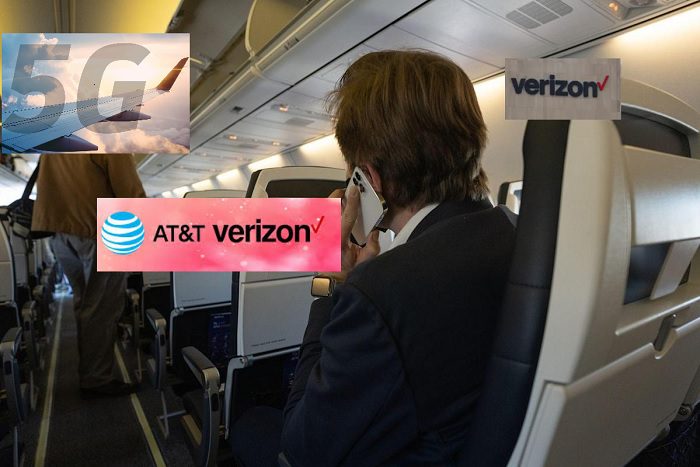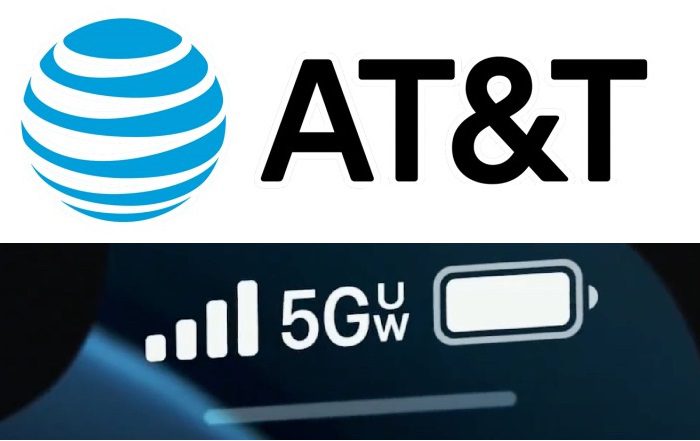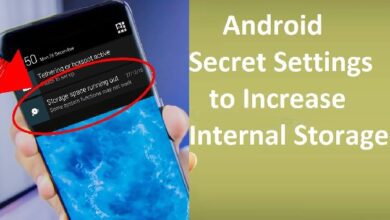Verizon And AT&T Delay 5G C-Band Launch Over Aircraft Interference Concerns

Verizon And AT&T Delay 5G C-Band Launch – Verizon and AT&T had hoped to launch their midline 5G networks within the next several weeks, but they may have to wait a while. The C-band launch was previously scheduled for 5th Dec, but according to the Wall Street Journal, it would then be on 5th Jan at the latest. The possibility of interfering with certain aircraft’s safety mechanisms is at concern.
Verizon And AT&T Delay 5G C-Band
The C-band spectrum is considered a significant milestone in letting 5G live up to the expectations in the United States, where 5G availability is currently suffering. Since Verizon and AT&T have been attempting to cobble together such a workable 5G network using fragments, they have lately spent a lot of money buying licenses for this frequency.
Mid-band 5G (such as the C-band) can accommodate more transmission rates than lower LTE-like frequencies while maintaining a reasonable range. There is simply not enough of this to go elsewhere. Verizon has turned to employ spectrum sensing exchange (DSS) to operate a 5G network in the same sectors as 4G in the absence of an adequate mid-band frequency. The outcomes aren’t spectacular, although C-band is done to support.
The frequency that AT&T and Verizon seek to use is in the 3.7-4GHz region, which is a portion of the C-band band. The C-band was once designated for satellite Television signals, but satellites broadcasts in this frequency necessitated massive 10-foot & higher dishes, which you may recall viewing rather frequently in the 1980s and 1990s. Ku-band equipment, which uses small 1-foot dishes, has largely supplanted them.
Providers may condense their residual C-band utilization with contemporary technology, freeing up large swathes of these ideal wavelengths for 5G. That’s exactly what they’re doing; by 5th Dec, organizations will be through with a lower C-band.
Read Also – What is Data Science? Is Data Science Good for Future? A Complete Guide
For some time, the transport sector has expressed worries regarding C-band disturbance, prompting the Federal Aviation Administration (FAA) to eventually intervene this week. It released an “involved in particular bulletin” warning about the possibility of radio altitude interference in the C-band.
These gadgets use radio signals around 4.2 and 4.4GHz, which really is close to the future 5G C-band, to measure the position of the airplane above the land. According to the FAA, C-band broadcasts could spill into the altitude region, posing a safety risk.
Industry analysts point out that in other locations wherein mid-band 5G is more established, there is no indication of such problems. Still, it’s a case of “better to be safe.” The airlines are collaborating with authorities to gain a better understanding of the FAA’s concerns.
The implementation is expected to begin in early 2022, but anything might happen. However, Verizon T-Mobile is enjoying the benefits of the large particular bandwidth it received from Sprint. Because Channel 41 (2.5GHz) is quicker than LTE and has a bigger battery than mmWave, it’s already a strong choice for 5G.
T-Mobile also bought a C-band frequency block that won’t be available until 2023. In order to compete effectively to Tmo, AT&T & Verizon will continue pushing to just get begun with C-band.

Concerns About The C-Band
The C-band encompasses mid-band bandwidth that ranges from 3.7 to 3.98 GHz. The mid-band frequency is thought to give the best combination of strength and coverage for 5G.
T-Mobile gained mid-band frequency when it gained Sprint, and it has launched 5G in that spectrum across much of the United States, although AT&T and Verizon have trailed behind.
The C-band auctions generated a record some billion when it ended early this year, with Verizon and AT&T being the top spenders.
However, a portion of the record investment was due to both businesses paying extra to get licences in regions planned for early access – Early access is now in jeopardy.
Satellite providers have generally used some of frequency in the C-band competition for streaming video transfer. Because technological advancements reduced necessity so much bandwidth, the carriers planned to move to a part of the spectrum in return for a share of the bidding revenues. They also committed to an accelerated clearance date for some licences in the country’s biggest markets, but most of those licences passed to AT&T and Verizon for premium prices in the bidding.
When Can I Anticipate My Verizon 5G Service?
Verizon 5G started a restricted deployment in select areas in 2018, and 5G began to emerge in cities across the United States in 2019. Transnational systems first appeared in 2020, and we anticipate them to swiftly spread in 2021.
Is Verizon Planning To Upgrade To 5G?
We were the first to build a 5G network, and now we can have to be the 1st to provide Verizon 5G to all. More than 75 cities, 13 airlines, and 60+ stadiums and arenas now have 5G Ultra Bandwidth, and 5G Nationwide is now accessible to much more over 230 million inhabitants in over 2,700 places.
How Can I Disable AT&T 5G?
ATTHelp
- Settings App from the Home screen.
- After that, select Connections, then Cellular Networks.
- Pick Connection mode and then LTE 4G.
Is Verizon’s 5G Network Truly 5G?
Verizon’s millimeter-wave 5G system is defined as “5G Ultra Bandwidth,” or “5G UWB.” Although this isn’t as convoluted as AT&T’s strategy, Apple’s use of the similar sounding Ultra – wide band technologies in newer iPhones may cause some misunderstanding.
What’s The Deal With Verizon’s 5G Being So Slow?
The explanation for this is that Verizon utilizes a technique known as dynamic spectrum sharing, or DSS, to achieve 5G availability. Parts of 4G bands are reused for 5G. Our most recent experiments, conducted in New York City using some iPhone 12 Pro, reveal that DSS 5G is often slower than 4G, and only seldom faster.
Verizon Or AT&T: Which Is Better For 5G?
Verizon comes in second position in 5G Download Speed with a rating of 14.4 Mbps, up 0.2 Mbps from our previous analysis, whereas AT&T’s outranks from 8.8 Megabytes per second to 9.7 Megabytes per second.
Is It True That Verizon Is Giving Away Free 5G Phones?
With the exchange of an old cellphone, Verizon, the country’s largest wireless provider, is providing audiences free 5 g technology smartphones, such as the iPhone 12 Mini and Samsung’s S21 5G.






